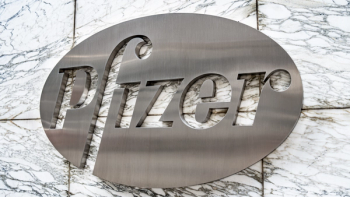Key Takeaways
FDA expands Neuraceq label for Alzheimer’s diagnosis and treatment selection:
Life Molecular Imaging’s positron emission tomography (PET) imaging agent can now be used to identify candidates for amyloid-targeting therapies.
Quantitative plaque analysis enhances diagnostic utility:
New labeling includes visual and quantitative assessment of amyloid plaques, improving clinical decision-making.
Alzheimer’s disease (AD) costs and prevalence continue to rise:
US dementia-related care costs are projected to reach $384 billion by 2025 and nearly $1 trillion by 2050.
The FDA approved expanded labeling for Life Molecular Imaging’s Neuraceq (florbetaben F18 injection), an amyloid positron emission tomography (PET) imaging agent, for use in patients with Alzheimer’s disease (AD). According to the company, the updated indication supports the use of Neuraceq not only in the diagnostic assessment of patients with suspected AD, but also in identifying appropriate candidates for FDA-approved amyloid-targeting therapies. Additionally, the expanded label includes the use of quantitative amyloid plaque measurements alongside visual image interpretation to enhance diagnostic accuracy and treatment selection.1
How Will the Expanded Neuraceq Label Impact Alzheimer’s Diagnosis and Treatment Selection?
"This FDA action is a major advancement in Alzheimer's diagnostics," said Andrew Stephens, chief medical officer, Life Molecular Imaging, in a press release.
Neuraceq’s Initial Approval and Updated Indication
FDA first approved Neuraceq in March 2024 for PET imaging to estimate beta-amyloid neuritic plaque density in adults with cognitive impairment being evaluated for AD as well as related conditions.2 With the new indication, the safety profile has remained unchanged.
Safety Profile and Radiation Considerations
To date, no serious adverse events (AEs) have been reported in patients treated with Neuraceq. The most common AEs include pain, erythema, and injection site irritation. Life Molecular Imaging cautions that Neuraceq contributes to a patient’s cumulative long-term radiation exposure, which may increase the risk of cancer over time.1
FDA’s Broader Regulatory Momentum for Amyloid Imaging Agents
The label update follows a similar FDA action granted just a week earlier for another florbetapir F18 injection. Last week, the FDA also approved an updated label for Eli Lilly’s Amyvid in AD. The revised label allows Amyvid to be used in evaluating amyloid plaque levels in patients with cognitive impairment, including those being considered for amyloid-targeting therapies.3
Alzheimer’s Disease in the US: Prevalence and Public Health Impact
According to the Alzheimer’s Association, more than seven million people are currently living with AD in the United States, a number projected to rise to 13 million by 2050. One in nine individuals aged 65 and older is affected by AD. Research indicates that approximately 92% of Americans would be willing to take a medication that could slow the progression of the disease, with three out of five stating they would accept moderate to very high levels of associated risk. The cost of health and long-term care for people living with AD is projected to reach $384 billion by 2025 and nearly $1 trillion by 2050.
Demographic Disparities and Younger-Onset Dementia Trends
Women account for nearly two-thirds of AD cases in the United States. Black Americans are more likely to develop the disease than White Americans, and Hispanic individuals are about 1.5 times more likely to be affected than White Americans. Although AD is most common in older adults, younger-onset dementia also poses a significant public health concern. Approximately 110 out of every 100,000 individuals aged 30 to 64 are affected by younger-onset dementia, amounting to an estimated 200,000 Americans.4
"Updating the Neuraceq label to reflect the revised Appropriate Use Criteria for amyloid PET1 enhances clinicians' ability to support patient decision making and identify individuals who may benefit from amyloid-targeting treatment - ultimately contributing to improved patient outcomes,” concluded Stephens, in the press release.
References
- FDA Expands Indications for Neuraceq®, an Amyloid PET Imaging Agent, to Enhance Diagnosis and Care of Patients with Alzheimer's Disease. PR Newswire. July 1, 2025. Accessed July 2, 2025. https://prnmedia.prnewswire.com/news-releases/fda-expands-indications-for-neuraceq-an-amyloid-pet-imaging-agent-to-enhance-diagnosis-and-care-of-patients-with-alzheimers-disease-302496154.html
- FDA Approves Neuraceq. Drugs.com. Accessed July 2, 2025. https://www.drugs.com/newdrugs/fda-approves-neuraceq-florbetaben-f18-pet-imaging-beta-amyloid-plaques-4021.html
- FDA Expands Eli Lilly’s Amyvid Label to Guide Alzheimer Treatment Decisions. PharmExec. June 26, 2025. Accessed July 2, 2025. https://www.pharmexec.com/view/fda-expands-eli-lilly-amyvid-label-guide-alzheimer-treatment-decisions
- Alzheimer's Disease Facts and Figures. Alzheimer’s Association. Accessed July 2, 2025. https://www.alz.org/alzheimers-dementia/facts-figures#:~:text=navigate%20dementia%20care.-,Prevalence,other%20dementias%20as%20older%20Whites.





